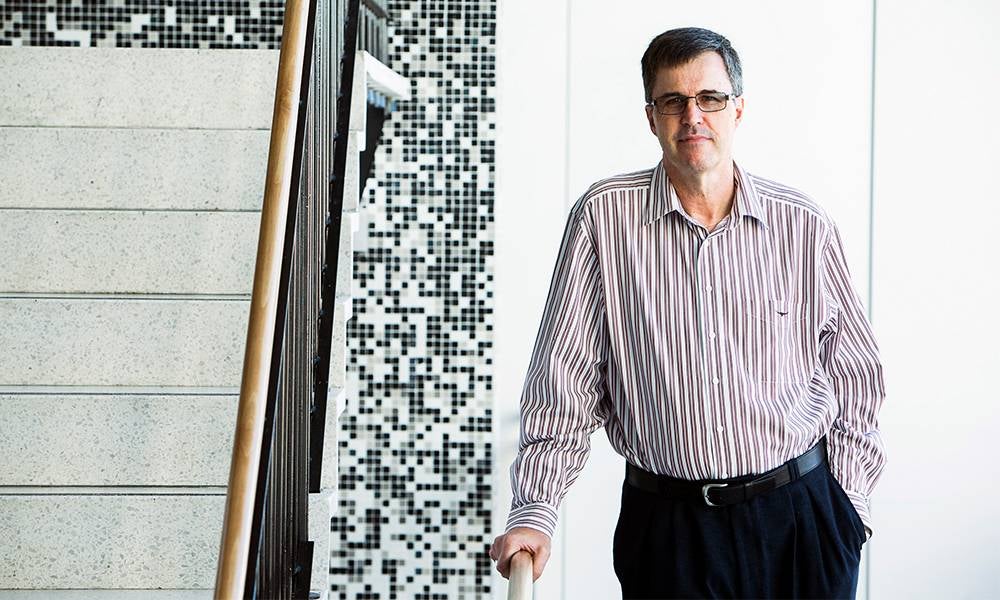Health care inequality in Australia: how fair is Medicare?
Low- and high-income patients navigate very different health care pathways following the onset of diabetes or heart disease, and policy changes are needed to tackle health care inequalities
Australia’s health system is one of the best globally, providing safe and affordable health care for all Australians. This is certainly true to an extent, with Australia’s public health system, Medicare, providing people with essential hospital treatment, doctor appointments, and medicine for free or substantially reduced cost. But the Australian system also drives health care inequality by favouring those with higher incomes.
On average, Australians living in rural and remote areas live shorter lives, suffer from higher levels of disease and injury, and have poorer access to and use of health services than people living in metropolitan areas. Across Australia, the gap in health status between Indigenous and non-Indigenous Australians also remains unacceptably wide, a human rights concern that has been identified by United Nations committees and acknowledged as such by Australian governments.
But Australia’s public health system doesn’t just favour those in metropolitan areas or of non-Indigenous descent. Several features of the Commonwealth-funded health insurance scheme also favour privately insured, higher-income earners. This means health care inequality still affects many Australians.
Indeed, Australians today navigate a pathway of care that is heavily influenced by their ability to pay, rather than the optimum mix of substitutable services, says Denzil Fiebig, Professor in the School of Economics at UNSW Business School. In a recent study, Health care use in response to health shocks: Does socio-economic status matter? Prof. Fiebig and colleagues find that significant policy changes are needed to ensure the distribution of this service becomes genuinely equitable for all Australians.

How does the Medicare system create health care inequality?
In Australia, Medicare covers the cost of treatment in public hospitals and subsidises the cost of a wide range of health services and medications. If patients can find a bulk-billing doctor, then Medicare covers the doctor's fee and patients do not incur any out-of-pocket costs. While it might be relatively easy to find a bulk billing GP, it is much more difficult when it comes to specialists. For the most part, funding of Medicare comes from tax, and more tax is taken from those with higher incomes, which provides care for those with less money. In theory, this should make Medicare fair. And to some extent, access to health care services and facilities is equitable.
However, the degree of access to health services still relies heavily on individuals’ socio-cultural, socio-economic and environmental determinants. This is because the pathways chosen for health care are often chosen based on the patient’s ability to pay rather than the most effective or efficient bundle of care delivered through a combination of GP and specialist care.
Read more: How better leadership in hospitals can improve patient outcomes
How does income inequality lead to health care inequality?
In their study, the authors examine how different care services such as primary care, specialist care, and emergency department care (and notably the mix across the three) change in response to a patient’s diabetes or heart disease diagnosis. The authors determine whether changes in the use of care services following the diagnosis are impacted by the patient’s socio-economic status, especially income once they are diagnosed with one of these severe conditions.
“The choice of the two health shocks (diabetes and heart disease) is part of the research design. They are both chronic conditions associated with large system health costs but cover situations where there is scope for different degrees of substitution between the care offered by general practitioners (GPs), specialists, and emergency departments,” explains Prof. Fiebig.
The researchers follow the patients before and after the advent of the health shock and compare the utilisation and out-of-pocket costs and use econometric methods to estimate how the patient response to the shock varies with their income. To do this, the researchers use data from the Sax Institute’s 45 and Up Study of over 250,000 NSW residents. The survey data represents almost all of Australia’s administrative data sources of health use and costs. Because of the initial sample size, the researchers obtain relatively large estimation samples of patients suffering either of the two health conditions.

Health care inequality: a closer look at the findings
There are four key findings of the study, according to Prof. Fiebig:
- Health care use spikes at the onset of the shock (or diagnosis), then tends to subside but ultimately remains above pre-shock levels.
- There is no significant change in low-urgency emergency department visits because of the shocks, thus indicating little substitution of primary or specialist services towards this mode of care.
- Low-income patients rely more heavily on GPs for follow-up care, while high-income patients rely more heavily on specialists for follow-up care. This disparity is greater among patients with diabetes and lesser among patients with heart disease.
- The Australian health care system can provide some protection for low-income groups following a health shock due to their greater reliance on GP-based care, where bulk billing is very prevalent. However, the same is not true for specialist services, where both low- and high-income patients face an increase in out-of-pocket (OOP) costs following a heart disease shock.
So, for example, if you’re a low-income earner diagnosed with diabetes, you would most likely rely on the care of your family GP following your diagnosis instead of a specialist (in this case, an endocrinologist). On the other hand, if you’re a high-income earner, you are more likely to receive specialist follow-up care, with the difference between low and high-income patients amounting to an approximate increase of 26 per cent relative to pre-shock levels. While this doesn’t necessarily mean you are not getting good care as a low-income earner, it could make a big difference if your condition is complex. This is why a blend of the two care services is generally thought to be the best approach in managing such a condition.

How can we make Australia’s health care system more equitable?
These findings are not surprising, according to Prof. Fiebig. But by obtaining precise estimates of the sheer magnitudes of the effects associated with these expected responses, researchers gain considerable value and support for what they already suspect.
Little research to date has considered the degree of substitutability of emergency departments for GP and specialist visits, so finding little substitutability between the two was an informative result, says the professor: “In some cases, the interpretation of results was nuanced and needed further analysis, especially around the prevalence of bulk billing and how that changed by income and before and after the health shock. So again, the results weren’t “surprising” but did require further investigation to better understand what was going on,” he says.
So, while Medicare is undoubtedly a step in the right direction in achieving a universal insurance system, the ability to pay remains a driver of health care use and health system inequities, reiterates Prof. Fiebig.
Read more: Here's how to fix the broken model for funding aged care
“Our work stresses variation in the treatment pathways across socio-economic groups that occur following the onset of a health shock. As such, there is a need to re-examine the use and affordability of different health care pathways. Equity of access is a major objective of Australia’s Medicare system and implies that equal needs should lead to equivalent treatment bundles of care based on the most effective and efficient treatment pathway – rather than the ability to pay.”
But since this is not the case, he says further policy action is needed to meet Medicare’s objective of equitable access. “The research highlights the need for greater recognition of treatment pathways in the way we pay for health care. This requires funding models that reflect a bundle of services rather than focusing on affordability in a particular sector such as primary care. This would require major policy changes,” concludes Prof. Fiebig.
Denzil Fiebig is a Professor in the School of Economics at UNSW Business School. His main research area is econometrics with an emphasis on applications in health economics. For more information, please contact Prof. Fiebig directly.
